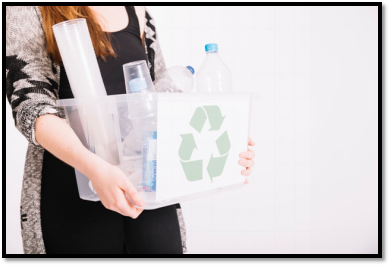Plastic Packaging—Not All Are Built the Same!

For the average consumer, their knowledge of plastic packaging is limited to what they learned in school. They may have basic knowledge of PET products and that biodegradable plastic exists, but it usually stops there.
However, as someone who uses plastic packaging for their product or service, it’s important to you how many types of plastic packaging options there are and how you can benefit from them.
Different Classifications of Plastic
Conventional Plastics
Also known as petroleum-based plastics, this category includes PET, PP, and HDPE, among other types of products.
Originally regarded to be rgw best options due to their cost-effectiveness and durability, this class of products has been under fire lately because of its non-renewable nature. Not to mention that their durability works against them, as they remain for decades in landfills and garbage dumps.
A leading factor that contributes to land and water pollution, petroleum-based plastics are still nonetheless used, but are now being used as examples of how plastic can be responsibly disposed of.
Biodegradable Plastics
Biodegradable plastics are made with polymers that imitate the metabolism of microorganisms. With the final product comprising water, CO2, as well as residual biomass, this plastic option is often mistaken to be bioplastic—more on that later.
There is some uncertainty and confusion around the timelines of the degradation process—how long it takes and how much shorter it is than certain petroleum-based products. But most experts state that environmental conditions may affect the timeline, so we can’t have a hard-and-fast rule with regard to this.
Bioplastics
A hybrid that’s made partly from petroleum-based plastic and partly from a renewable, biological polymer, bioplastic is often confused to be a 100 percent bio-sourced product. They’re produced from renewable biomass sources. This includes straw, food waste, etc.
Compostable Plastics
Made with polymers that are similar in composition to organic materials, compostable plastics are, in fact, biodegradable. They are a subset of biodegradable plastics. But—and this is important—this doesn’t mean that a biodegradable plastic will also be compostable.
Compostable plastic requires exposure to other organic materials and elements in order to reach decomposition levels and has a drastically different timeline than that of your average biodegradable plastic.
Oxo-Degradable Plastic
This option is made with petroleum-based plastic that is formulated with the addition of certain chemicals that lead to degradation if exposed to oxygen. Not to be considered a subset of compostable plastic or bioplastic, this type of plastic degrades by way of fragmentation, i.e., the plastic breaks into smaller bits and pieces.

Using Quality Plastic Packaging Products
 Packaging suppliers and major brands are taking steps to reduce the environmental impact of petroleum-based plastics by enhancing the quality of the packaging and spreading awareness about the right way of disposing plastics.
Packaging suppliers and major brands are taking steps to reduce the environmental impact of petroleum-based plastics by enhancing the quality of the packaging and spreading awareness about the right way of disposing plastics.
In fact, even Premium Vials is taking active measures to educate people on how plastic bottles can be used to one’s benefit.
With time, it is expected that the global industry will be able to turn toward amber glass and other eco-friendly products for their packaging. For now, we are providing only quality to ensure that what consumers have, doesn’t end up in landfills, but serves them well for the years to come!
Recent Posts
-
Great ideas need Great packaging.
Whether you’re looking for bulk glass or plastic containers, jars or closures, We’ve got you co …4th Nov 2024 -
Why Should You Choose Amber Glass When Packaging Beauty Products?
Designing a line of beauty products is no simple task. So many details go into planning and crafting …7th Jul 2022 -
Candle Supplies - The Benefits of Using Tins for Your Candle Business
Candle business is a fantastic way to turn a hobby into an extra income stream. For those willing an …7th Jul 2022



